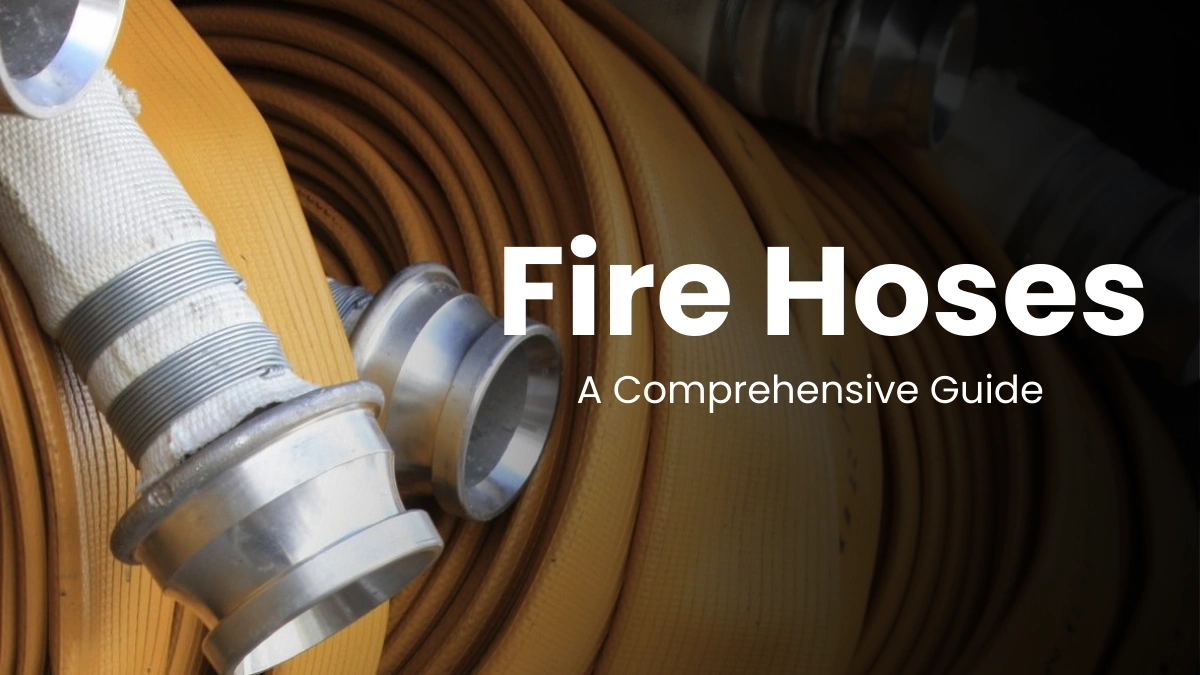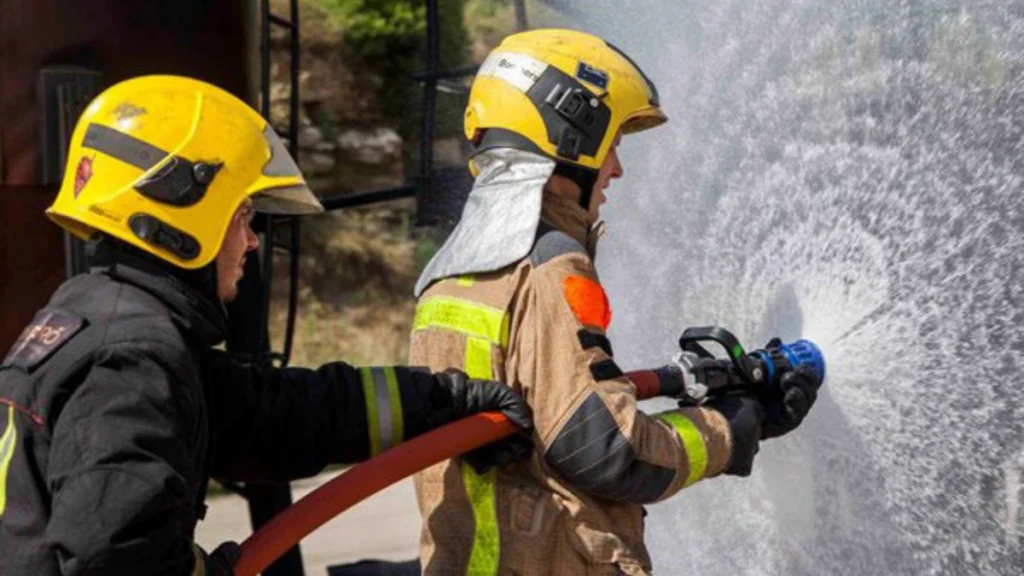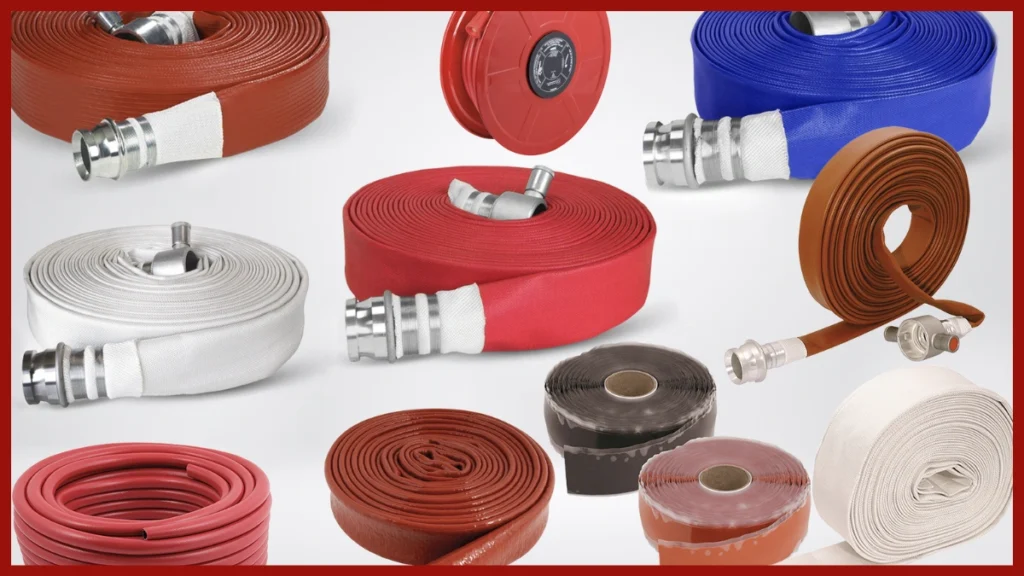
Fire hoses play a very important role in combating fires and saving lives and property. This equipment is very flexible and important because it works as a lifeline for firefighters, enabling them to deliver a strong stream of water to control and extinguish flames. In this article, we will learn about what fire hoses are and their types, their importance, and their usage.
What is a fire hose
A fire hose is a high-pressure tube that is used to carry water or other fire suppression agents (such as foam or chemicals) to extinguish fires. Fire hoses are a component that plays an important role in firefighting and are used by firefighters to deliver a controlled stream of water to suppress or extinguish the fire. These fire hoses are flexible and durable. It comes in different types according to different firefighting needs.
Why Fire Hoses Are Important in Firefighting
Fire hoses are an essential in firefighting operations. It is because the importance cannot be ignored, because it has an important link between firefighters and the water source needed to combat fire. The importance of fire hoses in firefighting is due to many reasons, which are;
Water Delivery:
Fire hoses are used to transport water from a water source, like a fire engine, to the location of the fire because fire hoses are essential to provide large volumes of water at the case of a fire.
Suppression Power:
The strong water with a high-pressure stream helps cool down the fire, reducing its heat and strength. Fire hoses are important tools to control fires and stop them from spreading further.
The Purpose & Benefits of Fire Hose Reels

Fire hose reels are an essential part of fire safety systems, offering a readily available and controlled water supply for tackling fires. Positioned at strategic points within buildings, they enable occupants or trained staff to act quickly before a fire spreads, serving as the first line of defence during emergencies.
Purposes and Benefits of Fire Hose Reels:
Quick Access to Water: Once the hose has been removed and the valve is opened, fire hose reels provide an ongoing and immediate water delivery. They are therefore quite successful in putting out small to medium-sized fires, particularly in commercial and industrial settings.
Easy to use: Fire hose reels are simple devices with a hose that is easy to pull out to the required length and a nozzle to regulate water flow. Even non-professionals can use them effectively in an emergency thanks to their user-friendly design.
Reach and Coverage: Fire hose reels, which usually reach up to 30 meters, offer broad coverage, enabling users to address fires in far-flung areas of a building. Their adaptability makes it simple to get past obstructions and control the water exactly where needed.
Managed Water Supply: With the use of the adjustable nozzle, users may precisely target the fire’s base by controlling the water’s flow, direction, and pressure. This helps successfully limit the fire while minimizing water waste and avoiding needless property damage.
Observance of fire safety regulations: Fire hose reels are a safety necessity for commercial and industrial structures in several areas. Their installation contributes to overall building safety by assisting organizations in maintaining compliance with local fire safety regulations and standards.
Additional Fire Safety: Hose reels can control or put out small fires before they get out of control, but they are not a replacement for trained firemen. This buys time for firefighters to arrive and for a safe evacuation.
Adaptable Use: Fire hose reels are especially effective against Class A fires, which involve common combustibles like wood, paper, and textiles. Their adaptability makes them suitable for use in offices, warehouses, factories, and public buildings.
Fire Alarm Systems: Your Complete Guide to Safety & Protection
Fire Hoses Types and Their Uses

Fire hoses are an essential equipment for firefighting. It is designed to provide water or other fire retardants to extinguish fires. There are different types of fire hoses, each designed for specific applications. Let’s explain the different types and uses of fire hoses.
1. Attack / Firefighting Hoses
- Description: The most common type of fire hose is Attack firefighting hose. It is flexible, lightweight, and will be designed to handle high water pressure.
- Use: It helps to deliver high-pressure water directly onto the fire, which helps to stop and extinguish flames effectively.
- Features: Attack fire hoses available in different sizes like 1.5 inches (38 mm) and 2.5 inches (64 mm). It is commonly used in buildings, vehicles, and other incidents where fast and aggressive fire suppression is needed.
2. Supply / Standpipe Hoses
- Description: Supply standpipe hoses are mainly used to create a water supply network in large-scale fire incidents. They help to connect pumps to firefighting operations.
- Use: It is used to transport water from a fire engine or hydrant to the actual firefighting scene.
- Features: It is available in different larger sizes, usually 3 inches (76 mm) to 5 inches (127 mm), that is designed to carry a high volume of water.
3. Booster / Wildland Hoses
- Description: Booster wildland hoses are used for long-distance water supply, often in forests, rural areas, or tough terrains where fire access is limited.
- Usage: Booster wildland hoses are lightweight and easy to move. These are designed for wildland firefighting or situations requiring mobility.
- Features: These hoses are smaller in diameter, usually 0.75 inches (19 mm) or 1 inch (25 mm), compact, and easy to carry.
5 Mistakes People Make with Fire Extinguishers and How to Avoid Them
4. Industrial / Heavy-Duty Hoses
- Description: Industrial heavy-duty hoses are built for specialized firefighting operations, often linked with deluge systems and fire pumps.
- Use: These are used in hazardous material incidents or areas needing extra-strong fire suppression.
- Features: These are designed to withstand extreme conditions, resistant to scrapes, chemicals, and high temperatures.
Where Are Fire Hoses Used?
- Outdoors: Fire hoses are connected to a fire engine, fire hydrant, or portable fire pump.
- Indoors: They can be permanently attached to a building’s standpipe or plumbing system.
- Industrial Facilities: Fire hose reels are an essential part of fire safety systems in factories and plants.
- Commercial Buildings: Offices and other commercial spaces rely on fire hoses for quick fire suppression.
- Residential Areas: Fire hoses are also used in residential buildings and housing complexes.
Who Uses Fire Hoses?
- Firefighters: The primary users of fire hoses are fire fighters during firefighting operations.
- Municipal Fire Services: Fire hoses are essential for city fire departments to control large-scale fires.
- Industrial Users: Factories and plants use fire hoses when there is a high risk of fire.
- Commercial End-Users: Offices and buildings stores also use fire hoses in fire safety cabinets along with other safety gear.
Maintenance of Fire Hoses
Proper maintenance of Fire hoses are important to keep fire hoses effective and long-lasting.
- Proper Use: When you use fire hoses first you avoid dragging hoses across rough surfaces or sharp edges. You can use tools like hose rollers when needed, and never exceed the rated pressure.
- Cleaning & Drying: After every use of fire hoses, you unroll the hose, stretch it out, and brush away dirt. If exposed to oil, fuel, or chemicals, wash and decontaminate using approved methods. Rubber or nitrile-covered hoses should be wiped dry.
- Regular Checks: When using a fire hose, it performs visual inspections, operational checks, lubrication, and testing regularly to keep hoses in top working condition for emergencies.
Frequently Asked Questions
Q1. Where are fire hoses commonly used?
Fire hoses are commonly used outdoors, indoors, in industrial plants, commercial buildings, and residential areas.
Q2. Who usually uses fire hoses?
Fire hoses users are firefighters, municipal fire services, industrial workers, and commercial building occupants.
Q3. How should a fire hose be maintained?
For maintenance of fire hoses, it should be used carefully, cleaned after every use, dried properly, and checked regularly.
Q4. Why is cleaning a fire hose important?
Fire hose cleaning removes the dirt and harmful materials on it, that helps the hose last longer and work better in emergencies.
Q5. Can fire hoses be used in homes?
Yes, fire hoses are installed in some residential buildings as part of fire safety systems.
Final Words
Choosing the right fire hose and maintaining it properly is crucial for fire safety and suppression. In emergencies, a well-maintained hose can make the difference between control and disaster.
If you need high-quality fire hoses, fire safety equipment, or comprehensive MEP Services, Capital Solutions Fire Safety is a reliable supplier offering durable products and integrated solutions at affordable rates.
If you need high-quality fire hoses or fire safety equipment, Atasee is here to help. We offer durable, reliable, and affordable fire hoses designed to meet safety standards for industrial, commercial, and residential use.
Call us today at: +91 94172 77276
Email: ataseefireindutries@gmail.com
Get in touch now and secure the best fire hoses for your safety needs!

